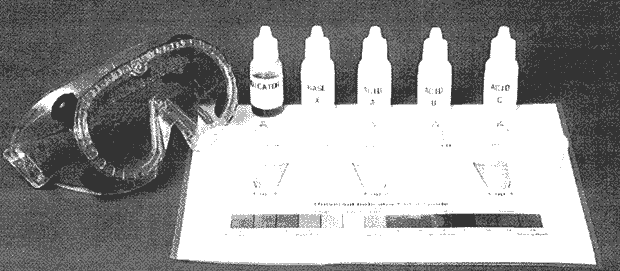 |
 |
|
|
|
|
8th Grade Performance Task Description:In the first part of Acids and Bases - Vinegar, entitled "Discovery," students will design and perform an experiment. Students will use a Universal Indicator Color Guide to measure the strength of acids and bases, as well as what happens when acids and bases are mixed together. Additionally, students decide which of three solutions of unknown pH will neutralize a fourth solution of unknown pH. Students have to apply this process to a problem involving a vinegar and an unknown vinegar solution. This task assesses students' abilities to provide independent variables, draw diagrams, design and conduct an experiment, collect, organize and present data, and draw conclusions about the experiment and the relationship found. Overall Task Content Area:
Specific Knowledge Areas:
Performance Expectations:
National Science Education Standards:8 B PS 1: Properties and changes of properties in matter:
Grades 5-8 8 A SI 1: Abilities necessary to do scientific inquiry:
Grades 5-8 1.3 Use appropriate tools and techniques to gather, analyze, and interpret data. The use of tools and techniques, including mathematics, will be guided by the question asked and the investigations students design. The use of computers for the collection, summary, and display of evidence is part of this standard. Students should be able to access, gather, store, retrieve, and organize data, using hardware and software designed for these purposes. 1.4 Develop descriptions, explanations, predictions, and models using evidence. Students should base their explanation on what they observed, and as they develop cognitive skills, they should be able to differentiate explanation from description — providing causes for effects and establishing relationships based on evidence and logical argument. This standards requires a subject knowledge base so the students can effectively conduct investigations, because developing explanations establishes connections between the content of science and the contexts within which students develop new knowledge. (Use the "hot" link on the PALS home page to check the full text of related National Science Education Standards, if desired.) General Instructions to the Teacher:Students will be working individually for the experiment/activity part of this exercise. The materials should be set out at each lab station, if possible. A central supply area, if needed, should be easily accessible. All supplies should be clearly labeled. Materials:At each station students will need:
Advance Preparation:SOLUTION CONCENTRATIONS
|
